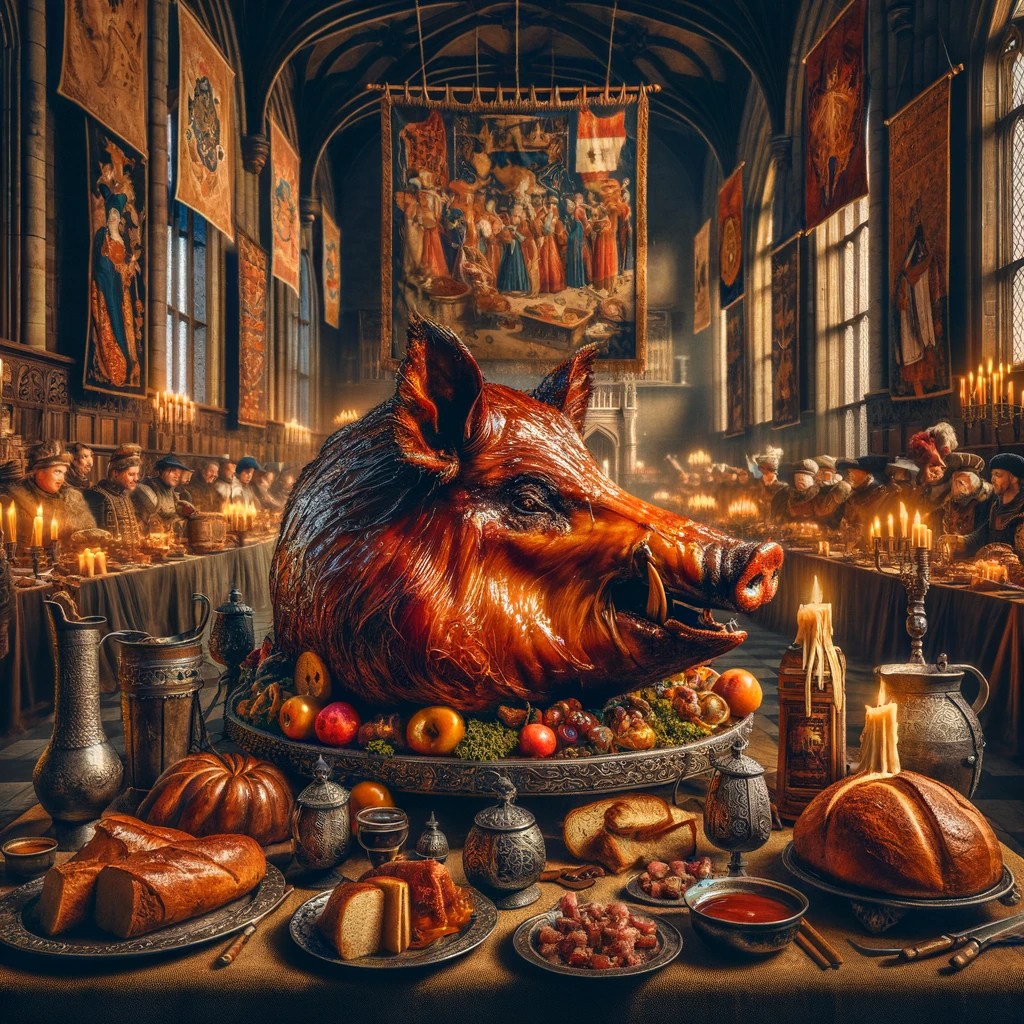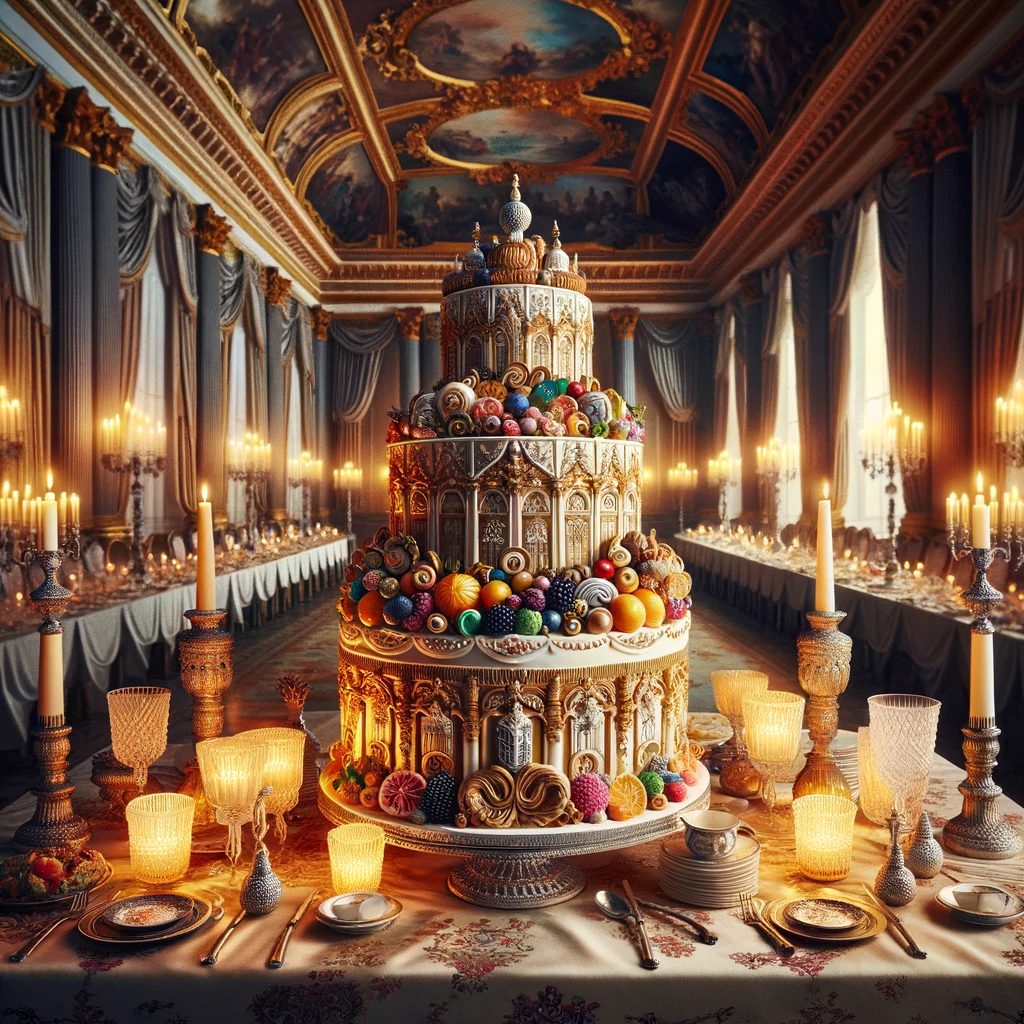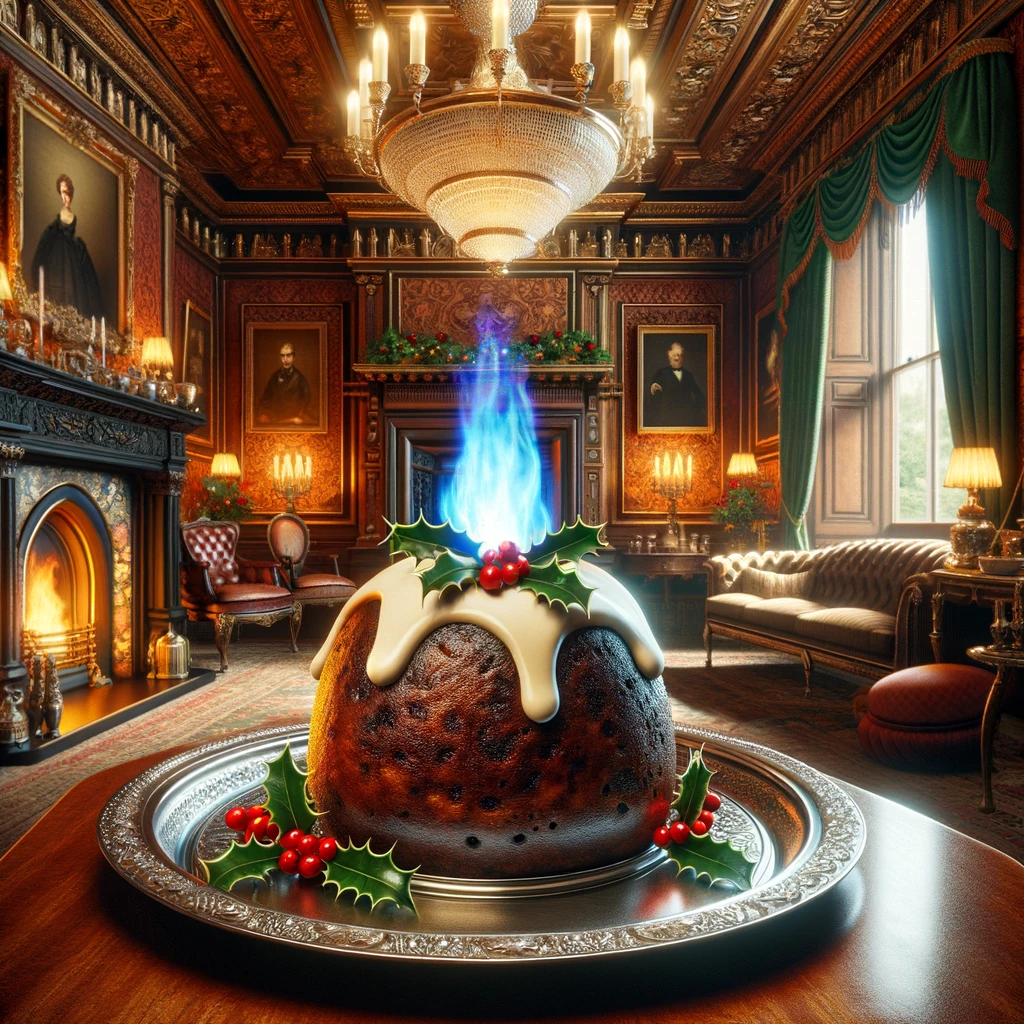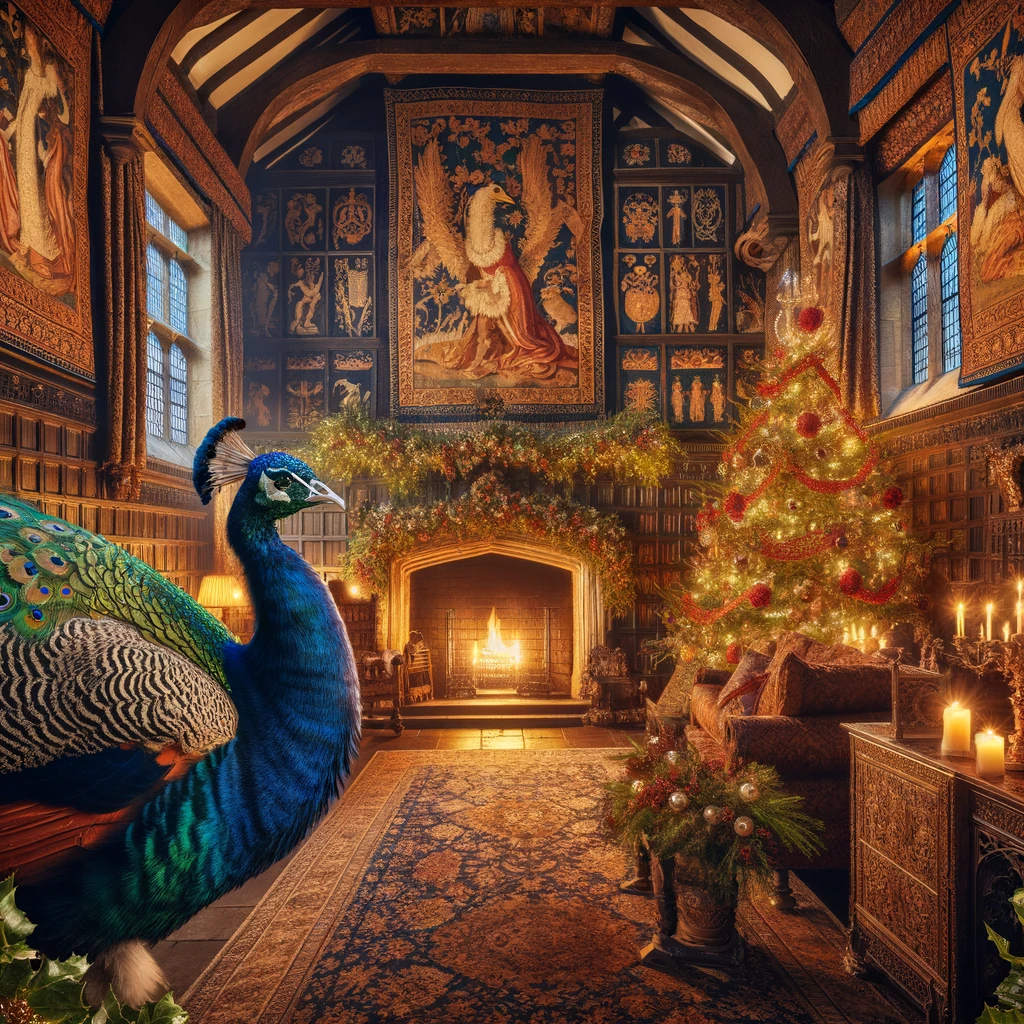As the festive season draws near, we at Archer’s Butchers are embracing the rich tapestry of Christmas food history, delving into past celebrations to inspire your holiday feasts. This year, we’re stepping away from the traditional turkey and exploring the quirky and fascinating culinary traditions that have graced British tables through the centuries.
A Medieval Marvel: The Boar’s Head
In medieval England, the Christmas feast was an event of grandeur and pageantry, particularly among the nobility. Central to this spectacle was the presentation of the boar’s head, a tradition steeped in symbolism and festivity.
The boar’s head, often considered a symbol of bravery and bounty, was a prized centrepiece, reflecting the wealth and status of the host.
This custom dates back to ancient Norse mythology, where the boar was sacred to Freyr, the god of fertility, harvest, and wealth.
The tradition was then embraced by the Anglo-Saxons and continued into the medieval era. The preparation of the boar’s head was an elaborate process. It was carefully cleaned, boiled, and often stuffed with spices and fruits. Then, it was garnished with bay and rosemary.

The Forgotten Feast: Peacock and Pies
During the Tudor period in England, a time marked by extravagance and grandeur in courtly life, culinary practices were no exception, especially during the Christmas season.
Among the most striking of these traditions was the serving of a roasted peacock, a dish that symbolised noble status and opulence. The peacock, esteemed for its magnificent plumage and regal bearing, was more than just a culinary delight; it was a display of wealth and power.
Prepared with its feathers reattached after roasting, the bird was often presented as the centrepiece of the Christmas feast, making a dramatic and luxurious statement.
Complementing the peacock were mince pies, a staple of Tudor Christmas feasts, but vastly different from the sweet treats we know today. These pies were large, oblong-shaped, and primarily filled with meat, including mutton, beef, and a mix of fruits and spices.
This combination of sweet and savoury flavours was typical of the era’s cuisine. The mince pies of the Tudor times were also believed to bring good luck if consumed on each of the twelve days of Christmas, a belief rooted in superstition and the special significance attached to the festive period.
This tradition of eating mince pies for luck was not just a culinary preference but a reflection of the era’s cultural and social practices.
Food was deeply intertwined with beliefs and customs, and the consumption of certain foods during specific times was thought to bring prosperity, health, and good fortune.
The Tudor Christmas feast, with its roasted peacock and meat-filled mince pies, offers a fascinating glimpse into a period where feasting was not merely about sustenance but was an integral part of the social fabric, reflecting the customs, beliefs, and status of the time.
As we savour our sweet mince pies today, they serve as a delicious reminder of a rich and varied culinary heritage.
A Regency Delight: The Twelfth Night Cake
The Twelfth Night cake, a regal and opulent symbol of the Regency era’s festive celebrations, played a pivotal role in marking the conclusion of the Christmas season.
This tradition, centred around the Twelfth Night, celebrated on January 5th or 6th, signified the end of the twelve days of Christmas, a period of merrymaking and feasting.
Originating in the medieval period, the Twelfth Night cake evolved over the centuries. By the Regency era, it had become a lavish confection, a centrepiece of the night’s festivities.
These cakes were often grand and elaborately decorated, reflecting the affluence and artistic tastes of the time. They were adorned with intricate icing, symbols, and sometimes even crowned with figurines representing the nativity or other festive scenes.
The most intriguing aspect of the Twelfth Night cake was the hidden bean or pea baked inside. This small addition turned the cake-cutting into a game of chance and status.
The person who found the bean or pea in their slice was declared the ‘King’ or ‘Queen of the Bean’, bestowing upon them the honor of presiding over the night’s festivities.
This tradition was more than just a game; it was a temporary subversion of social hierarchies, allowing even a commoner a taste of royalty.
The Twelfth Night cake’s significance extends beyond mere festivity. It symbolized the mirth and communal spirit of the season, bringing together people of all classes in shared celebration.
While the tradition waned in the Victorian era, replaced by the Christmas cake and Yule log, the Twelfth Night cake remains an emblem of a time when cakes were not just desserts but bearers of tradition, social commentary, and festive joy.

The Victorian Twist: Plum Pudding’s Fiery Past
The Victorian era, renowned for its elaborate customs and celebrations, brought a unique flair to Christmas traditions, particularly with the Christmas pudding.
This iconic dessert, rich in both flavour and history, was not just a treat but a spectacle, thanks to the dramatic tradition of setting it aflame.
Tracing its origins, the Christmas pudding’s roots are deeply embedded in medieval England, where it began as a porridge called ‘frumenty,’ a mixture of beef, mutton, raisins, currants, prunes, wines, and spices.
Over time, it evolved, losing its meat content and becoming sweeter, more like the pudding we know today. By the Victorian era, it had become a quintessential part of the Christmas feast.
The act of lighting the pudding is steeped in symbolism, a practice believed to represent Jesus’ passion and light.
Victorians would douse the pudding in brandy and set it alight before bringing it to the table, creating a blue flame that danced across its surface.
This not only added a dramatic flair to the dessert but was also thought to have the power to ward off evil spirits, a nod to the superstitions of the time.
Moreover, the Christmas pudding was a testament to the Victorian love for incorporating hidden meanings and rituals into their celebrations.
Silver coins, thimbles, or rings were often baked into the pudding, each carrying its own significance and supposedly bringing luck, wealth, or even marriage to the finder.
This tradition of the flaming Christmas pudding, rich in history and mystique, remains a cherished part of the holiday season, echoing the grandeur and spirit of the Victorian Christmas.

The Twentieth-Century Tidbit: The Christmas Food Sandwich
The Christmas sandwich, a relatively modern culinary creation, has swiftly become a beloved staple in the UK’s festive food scene.
Its origins can be traced back to the practical and resourceful need to utilise leftovers from the grand Christmas feast. This sandwich ingeniously encapsulates the essence of a traditional Christmas dinner in a convenient, delectable format.
Typically comprising slices of turkey, savoury stuffing, tangy cranberry sauce, and occasionally a splash of rich gravy, all nestled between slices of bread, the Christmas sandwich is a harmonious blend of holiday flavours.
Its popularity is not just due to its delicious taste; it also resonates with the British love for practicality and avoiding wastage.
Furthermore, it reflects a cultural shift towards more casual, on-the-go dining experiences, even during the holiday season.
The Christmas sandwich’s rise to fame is emblematic of how culinary traditions evolve, merging practicality with festivity, and in doing so, it has become a cherished part of the UK’s Christmas gastronomy.
In fact, we have our very own take of this amazing creation, available from our Take-away as we lead into Christmas.

Conclusion
At Archer’s Butchers, we cherish these historical nuggets that remind us of the ever-evolving nature of Christmas feasts. This year, we invite you to draw inspiration from these tales of yesteryear.
Whether it’s reviving the boar’s head tradition or crafting your version of the Christmas sandwich, let’s celebrate the festive season with a nod to the past and a taste of the present.
Happy historical feasting!



